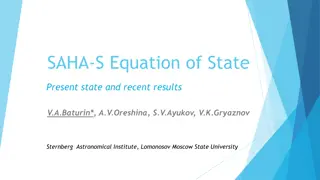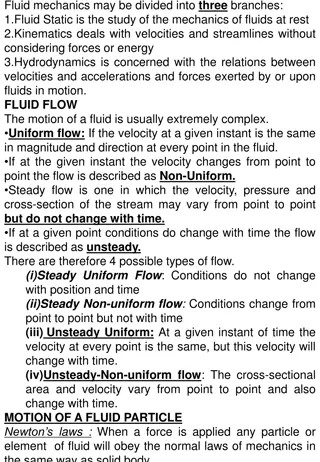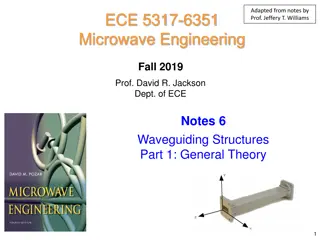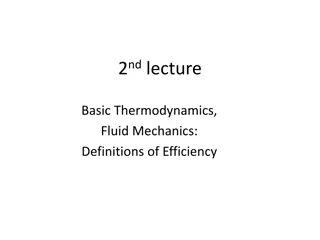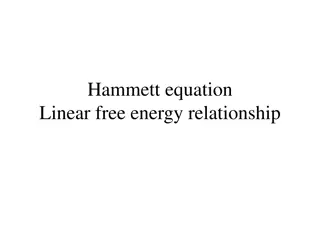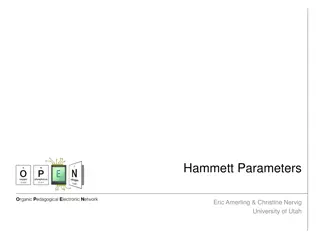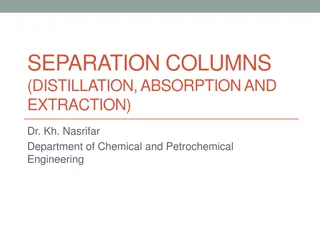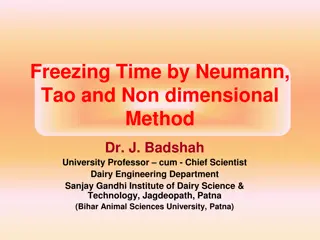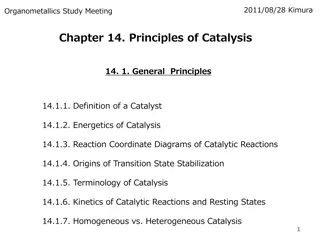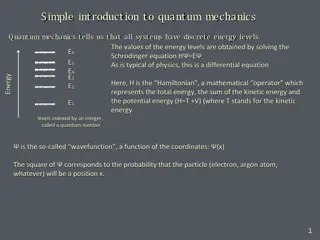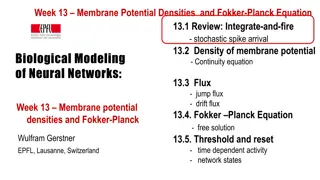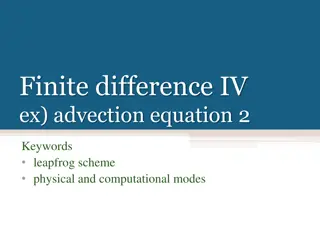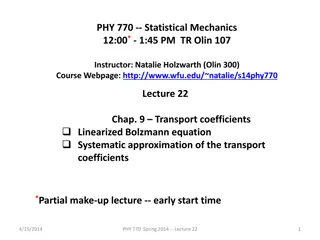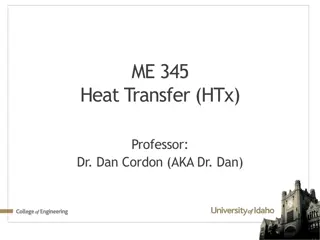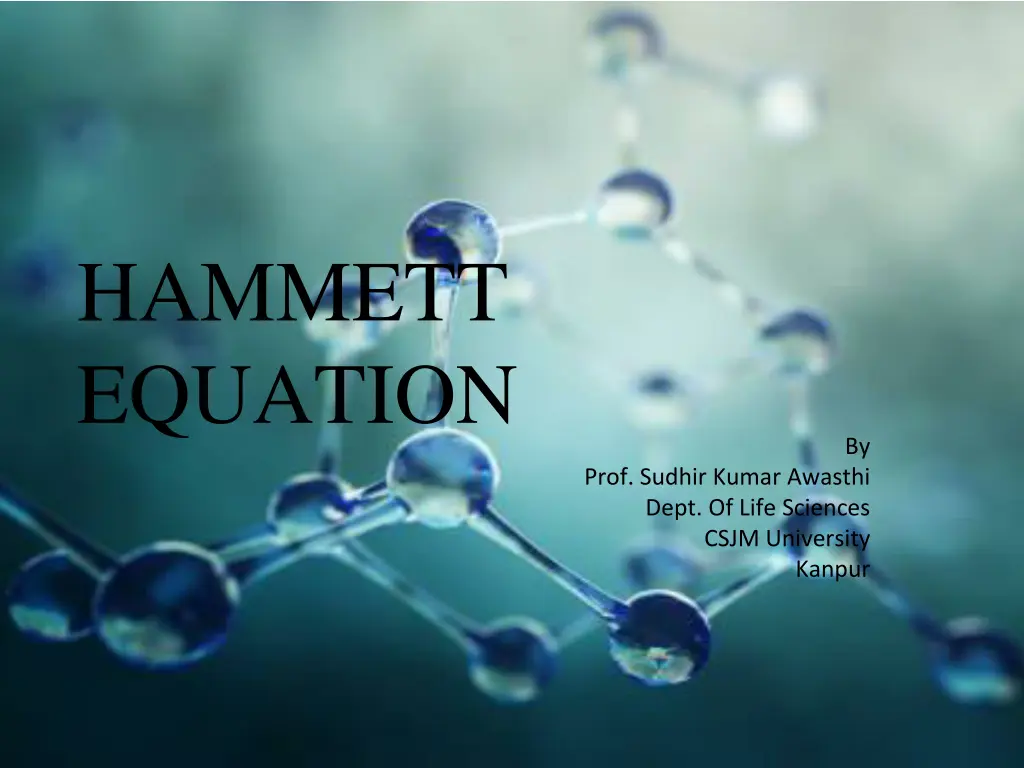
Understanding the Hammett Equation in Chemical Reactions
Explore the Hammett Equation by Prof. Sudhir Kumar Awasthi, studying substituent effects on reactions via a linear free energy relationship. See how electron-donating or withdrawing groups impact reaction rates and mechanisms.
Download Presentation

Please find below an Image/Link to download the presentation.
The content on the website is provided AS IS for your information and personal use only. It may not be sold, licensed, or shared on other websites without obtaining consent from the author. If you encounter any issues during the download, it is possible that the publisher has removed the file from their server.
You are allowed to download the files provided on this website for personal or commercial use, subject to the condition that they are used lawfully. All files are the property of their respective owners.
The content on the website is provided AS IS for your information and personal use only. It may not be sold, licensed, or shared on other websites without obtaining consent from the author.
E N D
Presentation Transcript
HAMMETT EQUATION By Prof. Sudhir Kumar Awasthi Dept. Of Life Sciences CSJM University Kanpur
Hammett Equation A Hammett equation is a linear free energy relationship that studies the effect of substituent changes on reactions log (ki/ko) = In any linear free energy relationship, one of the first steps that need to be taken is to define what is the reference reaction Hammett chose the dissociation constant for substituted benzoic acid as the model reaction CO2 CO2H H2O H3O X X How is the equilibrium for this reaction affected by a substituent x either meta or para to the acid group (do not consider ortho due to steric effects where the acid might go out of planarity with the ring)? Hammett originally studied equilibrium, but relationship can also be applied to rate differences
Hammett Equation The Hammett equation thus asks what influence does the electronic influence of substituent x have on the acid dissociation of benzoic acid In addition to describing what is the reference reaction for a linear free energy relationship, also need to decide on which x is the reference substituent Hammett decided that a hydrogen would be the reference substituent and he defined when X = H then H =0 The value for other substituents is thus determined by measuring the rate of benzoic acid dissociation with that substituent relative to when X = H (remember that is defined as 1 for reference reaction) = log (kx/kH) > 0, whenever substituents are more electron withdrawing than hydrogen (because with EWG the rate of benzoic acid dissociation is faster) < 0, whenever substituents are more electron donating than hydrogen (because with EDG the rate of benzoic acid dissociation is slower)
Hammett Equation Everything that has been done so far is studying the reference reaction and determining the substituent values ( ) with this reference reaction The key question with a LFER, however, is what effect do these substituent changes have on another reaction? O CO2 OEt NaOH EtOH X X log k/ko When X = H, = 0, k = ko In the basic hydrolysis of ethyl benzoate, the slope was determined to be +2.2 When X = other substituents, = value determinefrom reference, then plot versus log k/ko Fit to a straight line where slope = What does the value of tell us about the reaction mechanism? log (ki/ko) =
Hammett Equation Remember that the value of was determined with the reference reaction (dissociation of benzoic acid) by defining = 1 and defining when X = H, = 0 When > 0 The reaction is accelerated by electron withdrawing substituents, therefore aromatic ring has a higher electron density in the transition state than in the starting material When < 0 The reaction is accelerated by electron donating substituents, therefore aromatic ring has lower electron density in the transition state than in the starting material Also remember that scale was established with the reference reaction of benzoic acid where was defined as +1 Can predict not only the type of charge in transition state versus the starting material (either more or less negative charge by the sign of ) the magnitude of charge is determined by the magnitude of , if is larger than +1 than the reaction under consideration has a greater amount of electron density in transition state than starting material relative to reference reaction
Hammett Equation The Hammett equation is used often to determine type of charge being developed in transition state (can distinguish types of mechanisms) and the amount of charge Consider the reaction of dibenzyl chloride with ethanol H H - OEt Cl EtO + Cl EtOH X X X X Does reaction occur with SN1 or SN2? SN1 SN2 log k/ko When a Hammett LFER is run, the was determined to be -5.1, therefore a large amount of more positive charge in TS than SM The amount (and type) of charge in TS relative to SM should be different for the SN1 and SN2 reactions The data strongly indicates a SN1 mechanism
Hammett Equation In any linear free energy relationship there are a number of steps to properly perform the LFER and then being able to use the data to understand something about the mechanism 1) Determine what is the one aspect of the reaction that is going to be changed 2) Determine what is the reference reaction 3) Determine what is going to be the standard for the property that is being changed (in Hammett this was defined as when substituent was H) 4)Determine the values for the other possible changes by graphing log ki/ko and setting slope as equal to1 5) Graph a new reaction being studied with log ki/ko versus the values for the property being changed 6) If the points of this graph are a straight line, then the new reaction is said to be linearly related to the reference reaction * What does it mean if a graph of log ki/ko versus standard values does not give a straight line?
Hammett Equation Possible explanations for a nonlinear fit: 1) The mechanism changes with different substituents Consider the acidic hydrolysis of an ester H O O O CO2H EtOH H2SO4 O H CH2 H OEt OEt H2C CH2 X X X X H2O What is the mechanism? Protonate carbonyl EDGaccelerate reaction Protonate ester EWG accelerate reaction log k/ko A Hammett LFER was run and it was determined that the slope of the graph changed at 0.7 , with more EWG the mechanism with the ester protonated was favored while with more EDG the carbonyl was protonated preferentially
Hammett Equation 2) Simply a nonlinear fit This result implies reaction being considered is not similar enough to the reference reaction (benzoic acid dissociation) One possible reason for this observation is when reactions have a charge that is directly adjacent to the aromatic ring, in this case values do not correspond to a straight fit The resonance effects dominate more than with the reference reaction If this is the case, then a new reference reaction is needed that corresponds to charge adjacent to ring Reference reaction with a positive charge adjacent to ring: This reference reaction is thus run with different substituents, x = H is still defined as + = 0, but other substituents will get new standard values (called +) CH3 H3C CH3 CH3 Cl Cl X X
Hammett Equation Reference reaction with a negative charge adjacent to ring: O OH H3O X X Substituted phenol derivatives will thus be measured and the graph of log ki/ko will be defined with a slope of 1 to determine the substituent values for this reaction (called - values) If a new reaction being studied is not linearly related to the benzoic acid dissociation (thus not giving a straight line when log ki/ko is graphed versus ), then the log ki/ko values will be graphed versus either + or - to determine if the reaction is linearly related to either of these values If the new reaction is linearly related when graphed versus - values, the reaction more than likely has a strong negative charge adjacent to the ring in the mechanism If the new reaction is linearly related when graphed versus + values, the reaction more than likely has a strong positive charge adjacent to the ring in the mechanism
Grunwald-Winstein Equation The Hammett equation is a LFER that studies the effect of substituents on reaction rate The only criteria for a LFER is that only one change can be made to a reaction Another common LFER is to study the effect solvent change has on reaction rate (called a Grunwald-Winstein equation) As seen in a number of reactions, changing solvent can have a dramatic effect on reaction rate (sometimes it can even change what mechanism is operating) CH3 H3C Cl Cl H3C CH3 H3C CH3 At 25 C: H(g) = 150 kcal/mol H(H2O) = 20 kcal/mol The choice of solvent therefore has a dramatic effect on thermodynamics of reaction
Grunwald-Winstein Equation The solvolysis of t-Butyl chloride is used as the reference reaction for this LFER CH3 H3C Cl Cl H3C CH3 H3C CH3 log k/ko = m Y m = reaction parameter (similar to in Hammett) Y = solvent parameter (analogous to in Hammett for substituents) The Y values for a solvent is thus determined by graphing log k/ko for the solvolysis of t-Butyl chloride in the chosen solvent and setting the slope (m) equal to 1 with the standard solvent defined as 80% aqueous ethanol (therefore Y = 0 for this solvent) A new reaction would then be tested by graphing log k/ko versus Y and the slope of the straight line would be the m value, the magnitude of m would thus determine the amount of charge separation in the transition state for the new reaction relative to the reference reaction
Grunwald-Winstein Equation CH3 H3C Br Br H3C CH3 H3C CH3 m = 0.9 for the solvolysis of t-Butyl bromide The solvolysis of t-Butyl bromide thus is less sensitive to changes in solvent than the reference reaction t-Butyl chloride, therefore the transition state has less carbocation character Cl - Br - H3C H3C + CH3 + CH3 H3C H3C The C-Cl bond is thus broken more in the transition state structure than the C-Br bond which results in more charge separation for t-Butyl chloride (this should not be surprising since we would predict that the C-Br bond would break faster due to more polarizable leaving group which would imply an earlier transition state structure according to Hammond postulate)
Nucleophilicity Another LFER that is commonly used is to measure the nucleophilicity of a nucleophile (called the Swain-Scott equation) log k/ko = S (eta) = nucleophilicity constant (analogous to in Hammett) S = substrate sensitivity (dependent on reactivity of substrate, analogous to in Hammett) The reference reaction was determined to be a nucleophile reacting with methyl bromide in water solvent CH3Br Br NUC NUC CH3 The value was set at 0 for water and then the values for other nucleophiles were established by plotting log k/ko versus with a defined slope (S = 1) (nucleophilicity values are thus defined as the SN2 reactivity of the nucleophile with methyl bromide in protic solvent) We will study more about nucleophilicity, and how to predict whether the values increase or decrease, when we study nucleophilic reactions
Linear Free Energy Relationships General form of LFER: Gi log (ki/ko)B = Hammett Equation log (ki/ko)B Effect of changing substituents on reaction rates, reference reaction is dissociation of benzoic acid to define values, how a new reaction is affected by the same change of substituents indicates the type and degree of charge in the transition state for the mechanism AB Xi = Grunwald-Winstein Equation log (ki/ko)B Effect of changing solvent on reaction rates, reference reaction is solvolysis of t-Butyl chloride to define Yvalues, how a new reaction is affected by the same change in solvent indicates degree of charge separation in transition state for the mechanism = m Y Nucleophilicity (Swain-Scott) log (ki/ko)B Effect of changing nucleophile on reaction rates, reference reaction is nucleophile reacting with methyl iodide in methanol solvent = S
REFERENCES Organic chemistry Global Edition- J.W. Simek, L.G. Wade, Leroy G. (2016) Organic Chemistry Robert Neilson Boyd , Robert Thornton Morrison(2017) Organic Chemistry- T.W. Graham, Solomons (2017)


